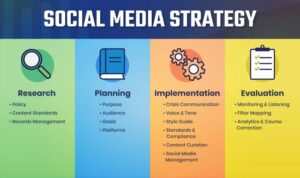Launching a Product Online involves a strategic process that combines market research, product development, online presence, marketing, and customer engagement. It’s all about making a splash in the digital world and maximizing your product’s impact.
From understanding your market to building a strong online presence and effectively marketing your product, this guide covers all the essential steps to ensure a successful online product launch.
Understanding the Market: Launching A Product Online
Market research plays a crucial role in the successful launch of a product online. By conducting thorough research, companies can gain valuable insights into consumer preferences, buying behaviors, and market trends. This information helps them tailor their product offerings and marketing strategies to meet the needs and expectations of their target audience.
Importance of Identifying the Target Audience
Identifying the target audience before launching a product online is essential for several reasons. Firstly, it allows companies to create personalized marketing campaigns that resonate with their target customers. By understanding their audience’s demographics, interests, and pain points, businesses can tailor their messaging and product positioning to effectively reach and engage potential buyers. Additionally, knowing the target audience helps in optimizing product features, pricing, and distribution channels to match their preferences and behaviors.
Role of Competitor Analysis
Competitor analysis is a critical step in the online product launch process as it provides valuable insights into the competitive landscape. By analyzing competitors’ products, pricing strategies, marketing tactics, and customer reviews, companies can identify gaps in the market and opportunities for differentiation. This information allows businesses to position their products effectively, highlight unique selling points, and develop competitive pricing strategies to attract and retain customers in a crowded online marketplace.
Product Development
Developing a product for an online launch involves several key steps to ensure its success in the market. From ideation to testing, each phase plays a crucial role in the overall process.
Creating a Unique Selling Proposition (USP)
In order to stand out in a crowded online marketplace, it’s essential to create a unique selling proposition (USP) for your product. This involves identifying what sets your product apart from competitors and clearly communicating this to your target audience. Your USP should highlight the key benefits of your product and address the specific needs or pain points of your customers.
- Identify your target market: Conduct thorough market research to understand who your target customers are and what they are looking for in a product.
- Analyze your competition: Look at what similar products are already on the market and identify gaps or areas where you can differentiate your product.
- Highlight key benefits: Determine the unique features or benefits of your product that will appeal to your target audience.
- Create a compelling message: Craft a clear and concise statement that communicates your product’s USP in a way that resonates with your customers.
Remember, your USP should be memorable, impactful, and clearly differentiate your product from others in the market.
Product Testing and Iteration
Product testing and iteration are essential steps in the product development process to ensure that your product meets the needs and expectations of your customers before the official launch.
- Conduct beta testing: Gather feedback from a select group of users to identify any issues or areas for improvement in your product.
- Iterate based on feedback: Use the feedback from beta testing to make necessary adjustments and improvements to your product.
- Test functionality and user experience: Ensure that your product functions as intended and provides a seamless user experience for customers.
- Refine and optimize: Continuously refine and optimize your product based on user feedback and market trends to maximize its potential success.
Building an Online Presence
Creating a website or online store for launching a product is crucial in today’s digital age. It provides a platform for customers to learn about your product and make purchases conveniently.
Optimizing Product Pages for Search Engines
To optimize product pages for search engines, it is essential to focus on relevant s related to your product. Incorporate these s in the page title, meta description, and throughout the content. Additionally, ensure that the product images are optimized with descriptive file names and alt tags.
- Research and identify relevant s for your product.
- Include s naturally in the product page title, meta description, and content.
- Optimize product images with descriptive file names and alt tags.
- Create unique and engaging product descriptions that highlight key features and benefits.
Role of Social Media Platforms in Promoting the Product Online
Social media platforms play a vital role in promoting a product online by reaching a wide audience and engaging with potential customers. It is essential to create compelling content and engage with followers to build brand awareness and drive traffic to your website or online store.
- Choose the right social media platforms based on your target audience.
- Create a content calendar to plan and schedule posts effectively.
- Engage with followers through comments, messages, and interactive content.
- Utilize paid advertising options on social media platforms to reach a larger audience.
Marketing and Promotion

In today’s digital age, marketing and promotion are essential components of launching a product online. Utilizing various digital marketing strategies can help reach a wider audience and generate interest in your product.
Different Digital Marketing Strategies
- Social Media Marketing: Leveraging platforms like Instagram, Facebook, and Twitter to engage with potential customers and promote your product.
- Search Engine Optimization (): Optimizing your website and content to rank higher in search engine results, increasing visibility.
- Pay-Per-Click Advertising (PPC): Running targeted ads on search engines and social media platforms to drive traffic to your product page.
- Influencer Marketing: Collaborating with influencers in your niche to endorse your product and reach their followers.
Importance of Content Marketing Plan
Creating a content marketing plan is crucial for a successful product launch. It involves developing valuable and relevant content to attract and retain a specific audience. This helps build brand awareness, establish credibility, and drive traffic to your product page.
Use of Email Marketing
- Building a mailing list: Collecting email addresses from potential customers to send targeted campaigns and updates about your product.
- Personalized communication: Tailoring email content to the recipient’s preferences and behaviors to increase engagement and conversions.
- A/B testing: Experimenting with different email formats, subject lines, and calls to action to optimize open rates and click-through rates.
- Automation: Setting up automated email sequences to nurture leads, onboard new customers, and re-engage inactive subscribers.
Sales and Customer Engagement

When it comes to managing online sales and orders effectively, it’s crucial to have a streamlined process in place. Utilizing an e-commerce platform with inventory management, order tracking, and secure payment options can help ensure a smooth transaction experience for customers.
Effective Order Management
- Implement automated order processing systems to reduce manual errors and increase efficiency.
- Utilize customer relationship management (CRM) software to track customer interactions and preferences for personalized service.
- Offer multiple shipping options to cater to different customer needs and preferences.
Excellent Customer Service, Launching a Product Online
Providing excellent customer service during and after the product launch is key to building customer loyalty and satisfaction. Promptly addressing customer inquiries, concerns, and issues can make a significant impact on the overall customer experience.
- Offer multiple communication channels such as live chat, email, and phone support for quick responses to customer queries.
- Implement a hassle-free return and exchange policy to instill confidence in customers when making a purchase.
- Engage with customers on social media platforms to foster a sense of community and brand loyalty.
Customer Feedback and Product Improvement
Collecting and analyzing customer feedback is essential for product improvement and business growth. Understanding customer preferences, pain points, and suggestions can help in refining the product offering and enhancing the overall customer experience.
- Utilize surveys, feedback forms, and reviews to gather insights from customers regarding their experience with the product.
- Regularly monitor social media channels and online review platforms to stay updated on customer feedback and sentiments.
- Implement changes based on customer feedback to continuously enhance the product and meet customer expectations.











